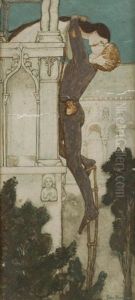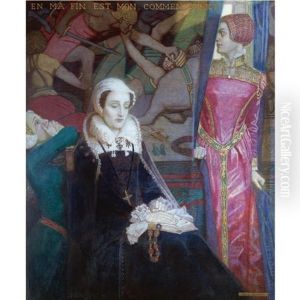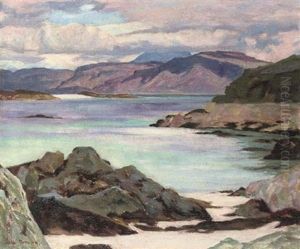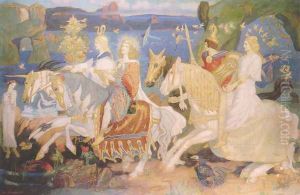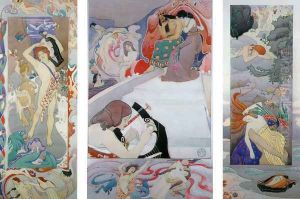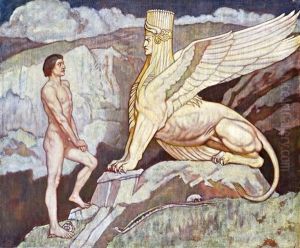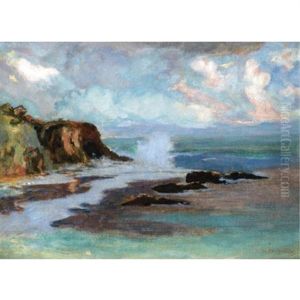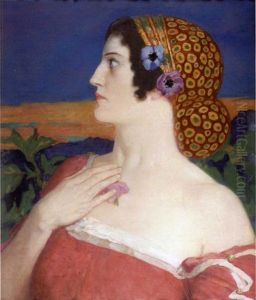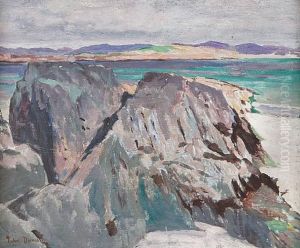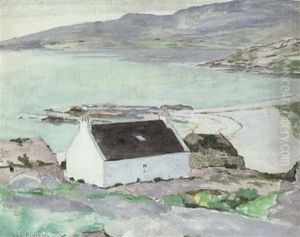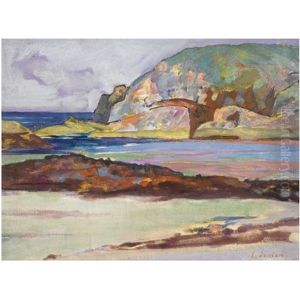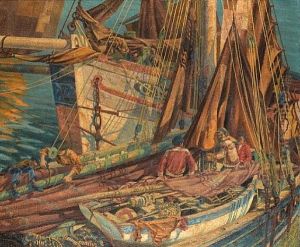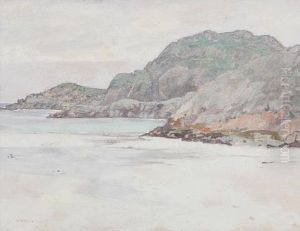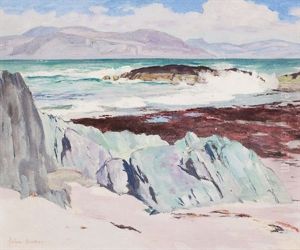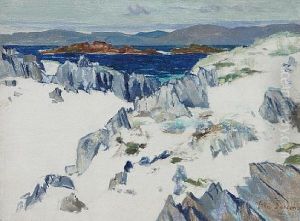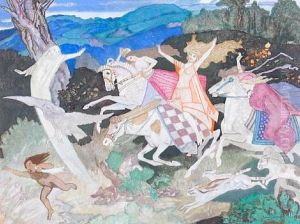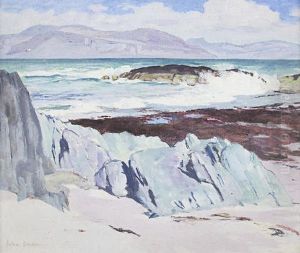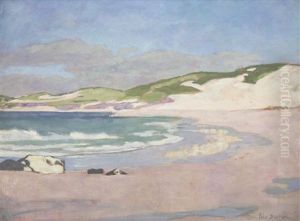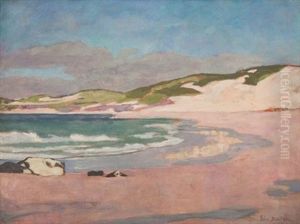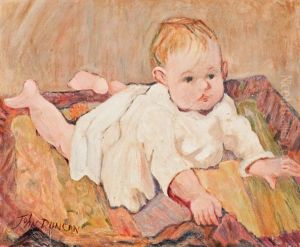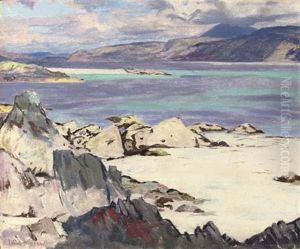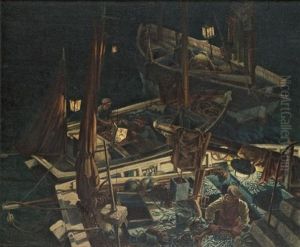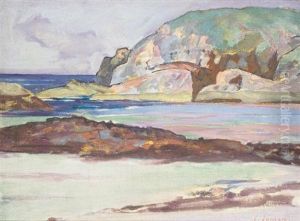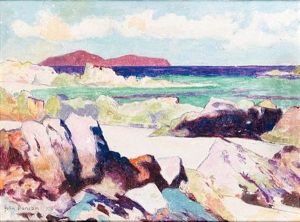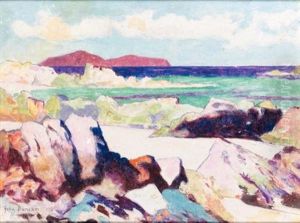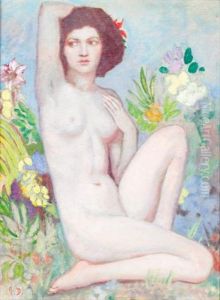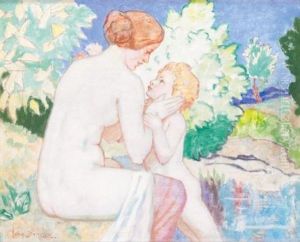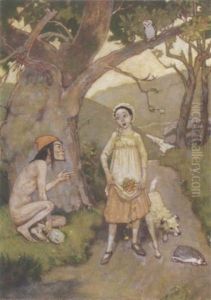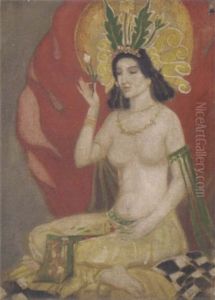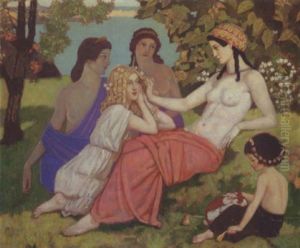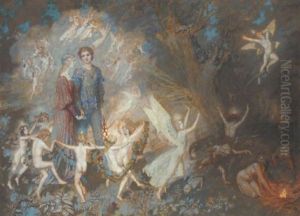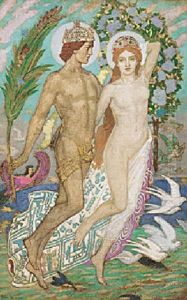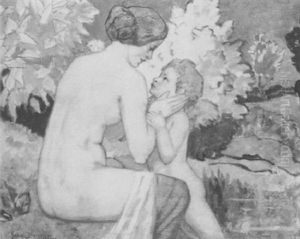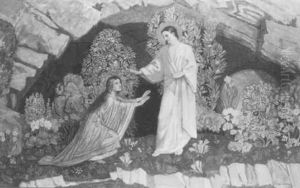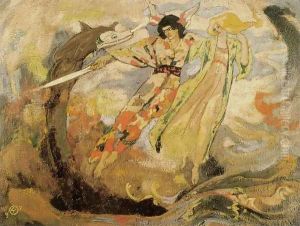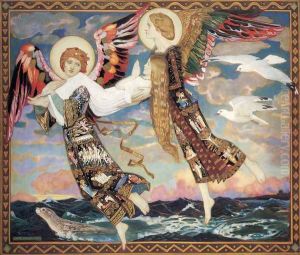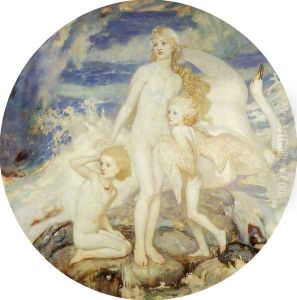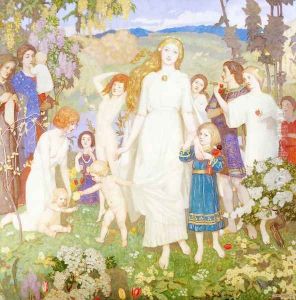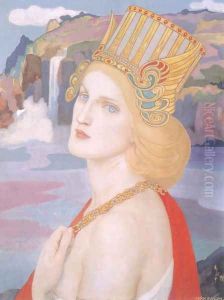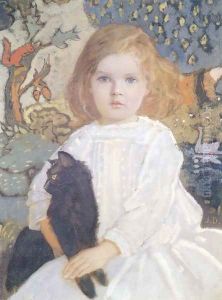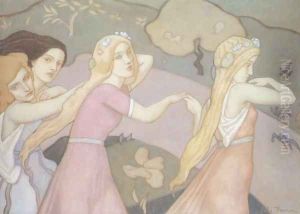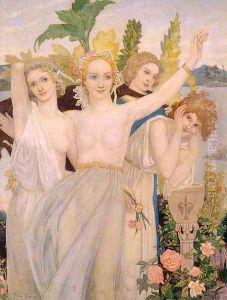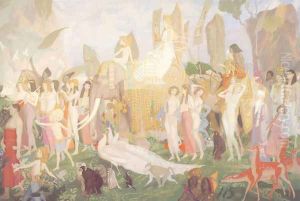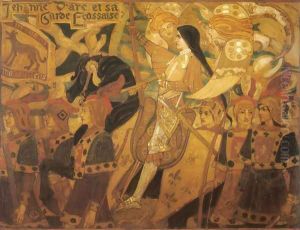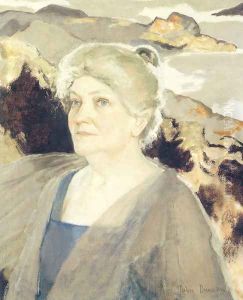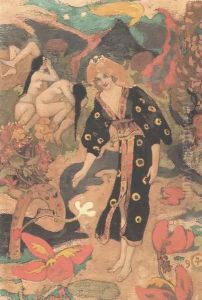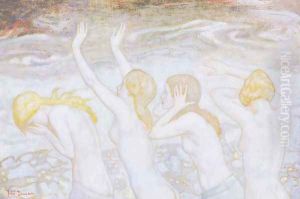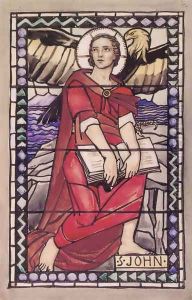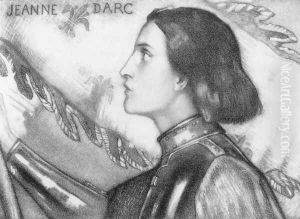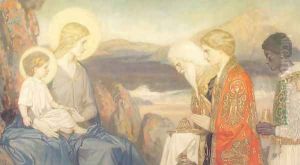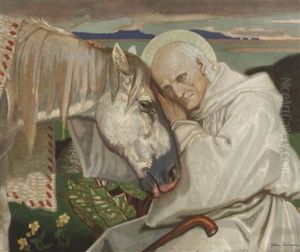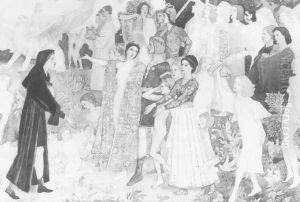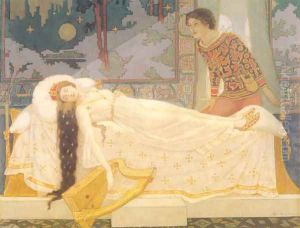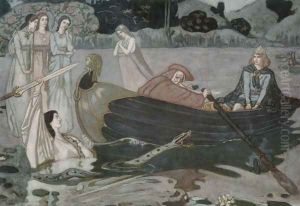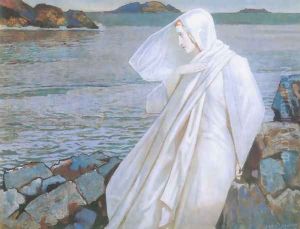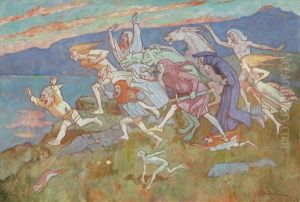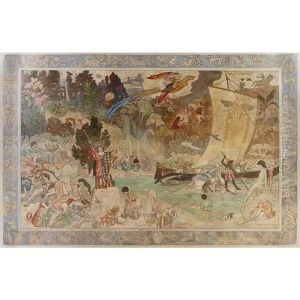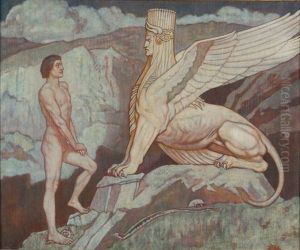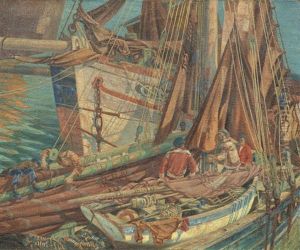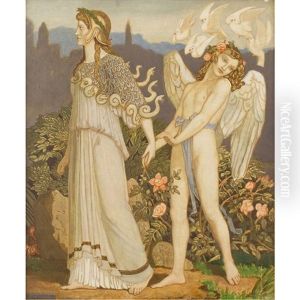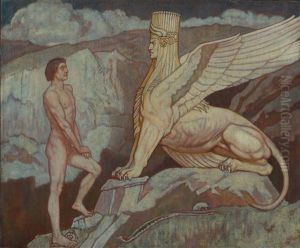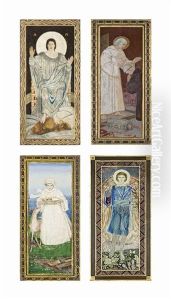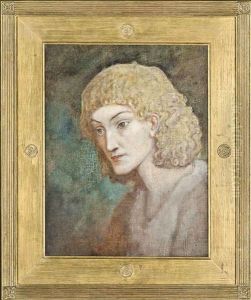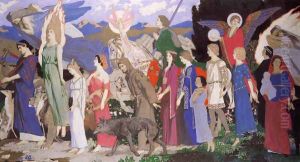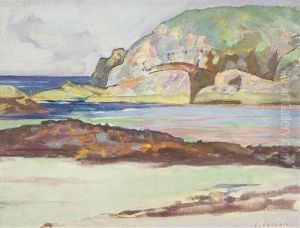John Duncan Paintings
John Duncan was a Scottish painter who was part of the Symbolist movement, which was known for its emphasis on emotion and individualism as well as mythological and dream-like imagery. Born on July 21, 1866, in Dundee, Scotland, Duncan was heavily influenced by the Celtic Revival movement and often incorporated themes from Celtic mythology and folklore into his work.
Initially, Duncan apprenticed in the textile industry in Dundee, which was a leading center for the jute trade in the 19th century. However, his passion for art led him to study at the Dundee School of Art and later, in the 1890s, at the Royal Scottish Academy in Edinburgh. He also travelled to Antwerp, where he was influenced by the work of Flemish Renaissance artists.
Duncan's style was characterized by a highly decorative approach, with a rich use of color and a blend of realism and symbolism. His paintings often featured elongated, ethereal figures and were filled with intricate details. One of his most famous works is 'The Riders of the Sidhe', which depicts the mythical fairy host from Celtic folklore and reflects Duncan's interest in mysticism and the esoteric.
Duncan was also an accomplished muralist and stained glass artist. He created numerous works for churches and other buildings in Scotland, often working on commissions that allowed him to explore religious and mythological themes.
Throughout his career, Duncan was active in the artistic community in Edinburgh and was associated with the Edinburgh School, a group of artists who were inspired by the rich cultural heritage of Scotland. His work contributed significantly to the Celtic Revival of the late 19th and early 20th centuries, which sought to preserve and celebrate the traditional culture and history of the Celtic peoples.
John Duncan passed away on January 23, 1945, in Edinburgh. His legacy is preserved in the collections of various Scottish museums and galleries, and he is remembered as a key figure in Scottish art, particularly for his dedication to Celtic themes and the Symbolist movement.
